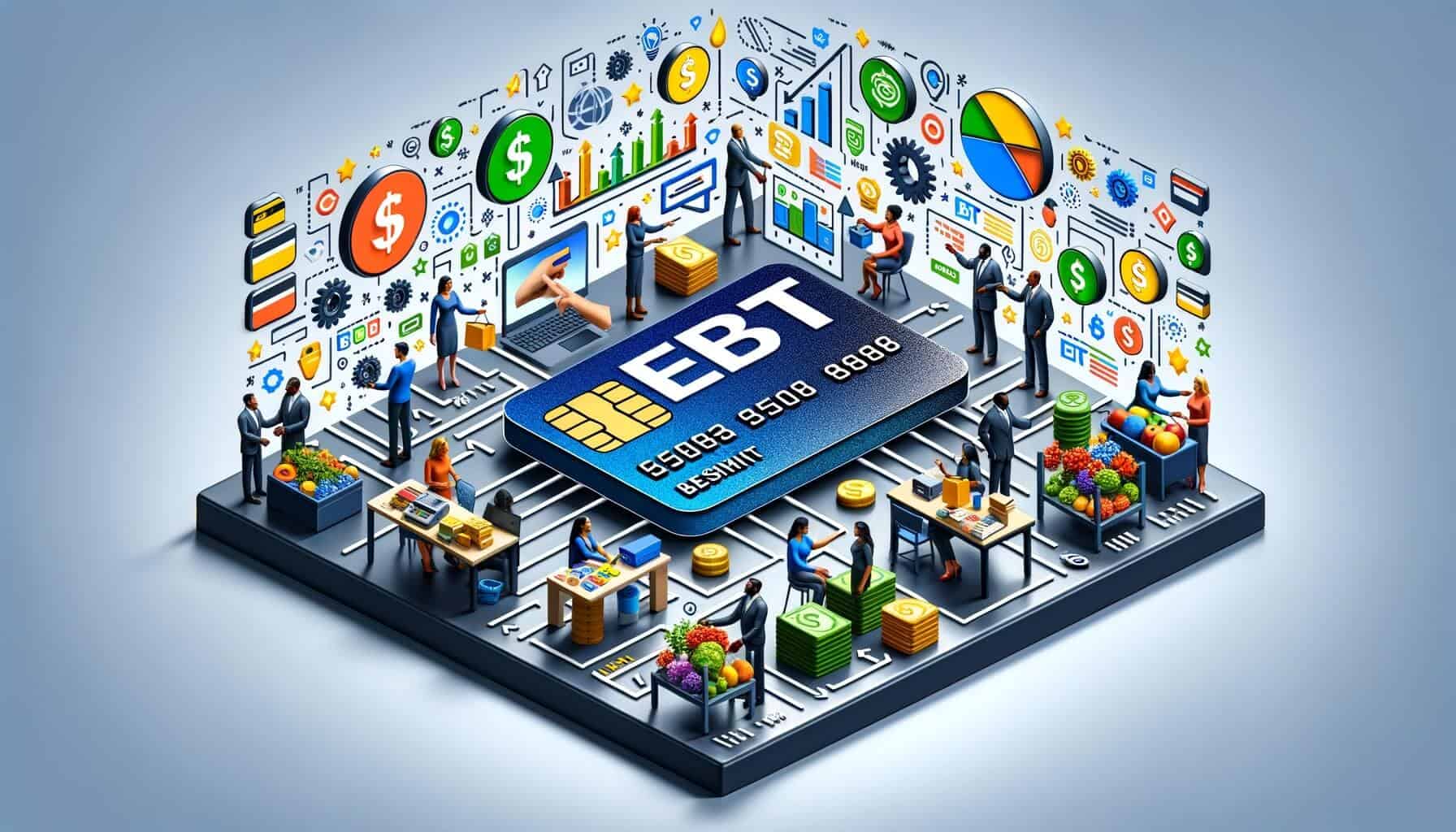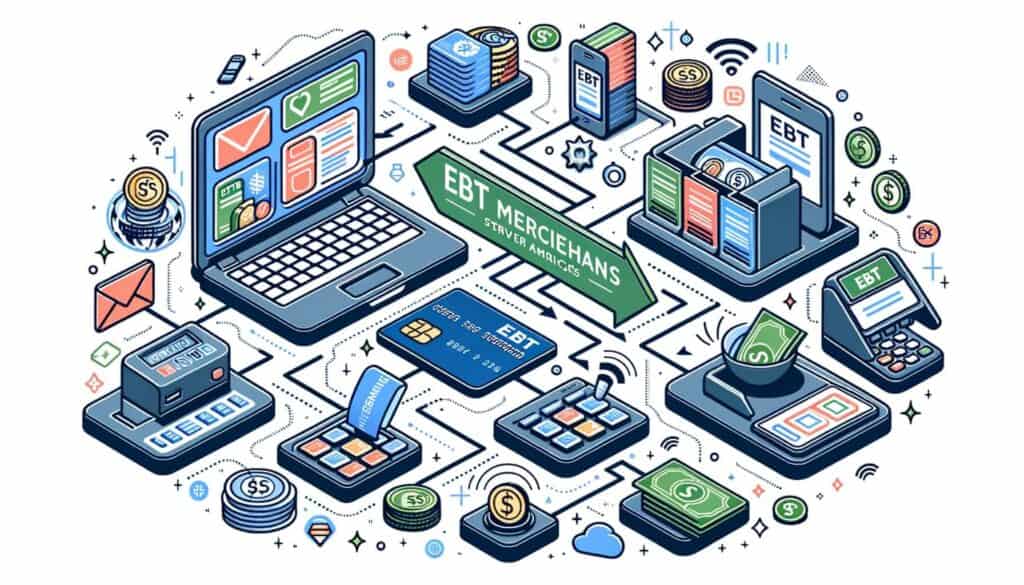
By Sharon Watson February 22, 2025
In today’s digital age, accepting electronic payments has become a necessity for small businesses. One such payment method that has gained significant popularity is the Electronic Benefit Transfer (EBT) system. EBT allows eligible individuals to access government benefits, such as Supplemental Nutrition Assistance Program (SNAP) benefits, through a card-based system.
For small businesses, offering EBT merchant services can open up a new customer base and increase revenue. However, it is crucial to understand the cost implications associated with these services. In this article, we will delve into the cost of EBT merchant services for small businesses, exploring the various factors that affect pricing and providing tips for reducing costs.
What are EBT Merchant Services and How Do They Work?

EBT merchant services refer to the payment processing solutions that enable small businesses to accept EBT cards as a form of payment. EBT cards function similarly to debit cards, allowing users to access their government benefits electronically. When a customer pays with an EBT card, the transaction is processed through the EBT merchant service provider, who verifies the card’s validity and deducts the purchase amount from the customer’s benefit balance.
To accept EBT payments, small businesses need to partner with an EBT merchant service provider. These providers offer the necessary equipment, such as point-of-sale (POS) terminals or mobile card readers, to facilitate EBT transactions. The provider also handles the backend processing, ensuring that the funds are transferred securely from the customer’s EBT account to the merchant’s account.
The Benefits of EBT Merchant Services for Small Businesses

Offering EBT merchant services can bring several benefits to small businesses. Firstly, it allows them to tap into a significant customer base that relies on government benefits for their daily expenses. According to the United States Department of Agriculture (USDA), over 42 million individuals participated in the SNAP program in 2020. By accepting EBT payments, small businesses can attract these customers and increase their sales.
Moreover, EBT merchant services can enhance the overall shopping experience for customers. With the convenience of using their EBT cards, customers can easily make purchases without the need for cash or checks. This streamlined payment process can lead to increased customer satisfaction and loyalty.
Additionally, offering EBT payments can help small businesses comply with legal requirements. In some states, certain types of businesses, such as grocery stores, are mandated to accept EBT payments if they meet specific criteria. By providing EBT merchant services, small businesses can ensure they are in compliance with these regulations and avoid any penalties or legal issues.
Factors Affecting the Cost of EBT Merchant Services

The cost of EBT merchant services can vary depending on several factors. Understanding these factors is crucial for small businesses to make informed decisions and choose the most cost-effective solution. Here are some key factors that can affect the cost of EBT merchant services:
1. Transaction Fees: EBT merchant service providers typically charge transaction fees for each EBT transaction processed. These fees can be a flat rate per transaction or a percentage of the transaction amount. It is essential for small businesses to compare transaction fees among different providers to find the most competitive rates.
2. Monthly Fees: Some EBT merchant service providers may charge a monthly fee for using their services. This fee covers the cost of maintaining the account and accessing the necessary equipment and software. Small businesses should consider their transaction volume and compare monthly fees to ensure they are getting a fair deal.
3. Equipment Costs: Depending on the provider, small businesses may need to purchase or lease equipment, such as POS terminals or mobile card readers, to accept EBT payments. These upfront costs or ongoing leasing fees should be factored into the overall cost of EBT merchant services.
4. Integration with Existing Systems: If a small business already has a payment processing system in place, integrating EBT merchant services with the existing infrastructure may incur additional costs. It is essential to consider any integration fees or development costs when evaluating the overall cost of EBT merchant services.
Understanding the Different Pricing Models for EBT Merchant Services

EBT merchant service providers offer different pricing models to cater to the diverse needs of small businesses. Understanding these pricing models can help small businesses choose the most suitable option. Here are the common pricing models for EBT merchant services:
1. Flat Rate Pricing: Some providers offer a flat rate pricing model, where a fixed fee is charged for each EBT transaction. This model is straightforward and easy to understand, making it suitable for small businesses with low transaction volumes. However, businesses with high transaction volumes may find that a flat rate pricing model becomes more expensive in the long run.
2. Interchange-Plus Pricing: Interchange-plus pricing is a more transparent model where the provider charges a fixed markup on top of the interchange fees set by the card networks. Interchange fees are the fees paid by the merchant to the card-issuing bank for each transaction. This pricing model allows small businesses to see the exact cost breakdown and can be more cost-effective for businesses with higher transaction volumes.
3. Tiered Pricing: Tiered pricing is a model where transactions are categorized into different tiers or levels, each with its own pricing structure. Typically, providers classify transactions as qualified, mid-qualified, or non-qualified, based on factors such as card type and transaction method. While tiered pricing can offer competitive rates for certain transactions, it can also lead to confusion and higher costs for businesses that frequently process non-qualified transactions.
Comparing EBT Merchant Service Providers: Key Considerations for Small Businesses
When choosing an EBT merchant service provider, small businesses should consider several key factors to ensure they are getting the best value for their money. Here are some considerations to keep in mind:
1. Reputation and Reliability: It is crucial to partner with a reputable and reliable EBT merchant service provider. Look for providers with a track record of excellent customer service, secure payment processing, and timely fund transfers. Reading customer reviews and seeking recommendations from other small businesses can help in assessing a provider’s reputation.
2. Pricing Structure: Compare the pricing structures of different providers to find the most cost-effective option for your business. Consider the transaction fees, monthly fees, equipment costs, and any other associated charges. It is also important to understand the provider’s policies regarding contract terms, cancellation fees, and any potential rate increases.
3. Equipment and Technology: Evaluate the equipment and technology offered by the provider. Ensure that the equipment is compatible with your business’s needs and that it meets the necessary security standards. Consider factors such as ease of use, reliability, and any additional features or integrations that may benefit your business.
4. Customer Support: Good customer support is essential when dealing with payment processing services. Look for providers that offer 24/7 customer support and have a dedicated support team to assist with any issues or inquiries. Prompt and reliable customer support can help minimize downtime and ensure smooth operations.
Tips for Reducing the Cost of EBT Merchant Services
While EBT merchant services are essential for small businesses, there are ways to reduce the associated costs. Here are some tips to help minimize expenses:
1. Compare Multiple Providers: Don’t settle for the first EBT merchant service provider you come across. Take the time to compare multiple providers and their pricing structures. Request quotes and negotiate fees to ensure you are getting the best possible rates.
2. Negotiate Volume Discounts: If your business has a high transaction volume, consider negotiating volume discounts with the provider. Many providers are willing to offer lower transaction fees for businesses that process a significant number of transactions each month.
3. Optimize Transaction Processing: Train your staff to process transactions efficiently and accurately. Avoid keying in transactions manually whenever possible, as this can lead to higher fees. Utilize the latest technology, such as barcode scanners or NFC-enabled devices, to streamline the transaction process and reduce errors.
4. Review Statements Regularly: Regularly review your EBT merchant service statements to ensure accuracy and identify any unnecessary fees or charges. If you notice any discrepancies or unexpected fees, contact your provider immediately to address the issue.
Frequently Asked Questions (FAQs) about EBT Merchant Services for Small Businesses
Q1. What types of businesses can benefit from offering EBT merchant services?
A1. While EBT merchant services are commonly associated with grocery stores, any small business that sells eligible products or services can benefit from offering EBT payments. This includes convenience stores, farmers’ markets, and even online retailers.
Q2. Are there any eligibility requirements for small businesses to accept EBT payments?
A2. The eligibility requirements for accepting EBT payments vary by state and the type of business. In general, businesses must meet certain criteria, such as selling eligible food items, to be eligible for EBT merchant services. It is important to check the specific requirements in your state.
Q3. Can small businesses accept both EBT and traditional debit/credit card payments?
A3. Yes, small businesses can accept both EBT and traditional debit/credit card payments. Many EBT merchant service providers offer integrated solutions that allow businesses to accept multiple payment methods through a single system.
Q4. How long does it take for funds from EBT transactions to be deposited into the merchant’s account?
A4. The time it takes for funds from EBT transactions to be deposited into the merchant’s account can vary depending on the provider. Typically, funds are deposited within 24 to 48 hours of the transaction.
Q5. Can small businesses pass on the transaction fees to customers paying with EBT cards?
A5. No, it is generally not allowed for small businesses to pass on the transaction fees to customers paying with EBT cards. The USDA prohibits surcharging or adding any additional fees to EBT transactions.
Conclusion
EBT merchant services offer small businesses the opportunity to tap into a significant customer base and increase revenue. However, it is crucial to understand the cost implications associated with these services. By considering factors such as transaction fees, monthly fees, equipment costs, and pricing models, small businesses can make informed decisions and choose the most cost-effective EBT merchant service provider.
Additionally, implementing strategies such as negotiating volume discounts, optimizing transaction processing, and regularly reviewing statements can help reduce the overall cost of EBT merchant services. By carefully managing the costs, small businesses can leverage EBT merchant services to their advantage and provide a seamless payment experience for their customers.